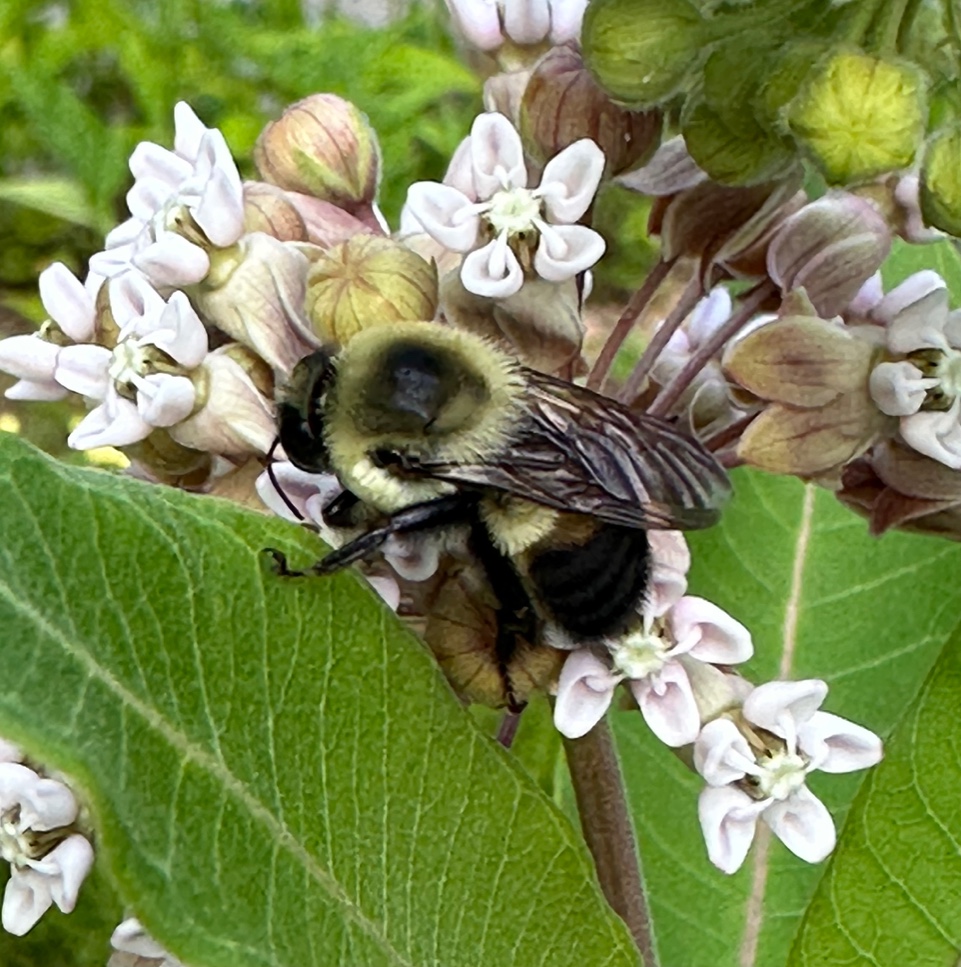Tuesday, June 13, 2023
Over the centuries, specific pollinators developed a special relationship with the plants they pollinate. Since local plants and insects evolved together, native plants are essential for hosting the egg laying and larval stages critical to insect life cycles, and their flowers provide food in an abundance of pollen and nectar for adult butterflies, moths, bees and other insects. Nectar provides
 A variety of bee species are drawn to native Common Milkweed (Asciepias syriaca) flowers, from large Bumblebees to tiny Sweat bees, creating a busy frenzy of nectar seeking flight in a flowerbed
A variety of bee species are drawn to native Common Milkweed (Asciepias syriaca) flowers, from large Bumblebees to tiny Sweat bees, creating a busy frenzy of nectar seeking flight in a flowerbed
This year, Pollinator Partnership is emphasizing the connections between climate and pollinators. It is their mission to promote the health of pollinators through conservation, education, and research. The organization warns, “Pollinators are dying because their food and homes are disappearing, diseases have increased, and rising temperatures and natural disasters are affecting their ability to survive — all of which are related to climate change. At the same time, the conservation of pollinators and their habitats can help combat climate change by supporting healthy ecosystems, air, soil, water, and plants. Combined, these results make planet earth a safer place for us to live.“
Did you know, bees are attracted to bright white, yellow, blue, or ultraviolet colors; while beetles are attracted to dull white or green?
What’s the best way to attract bees, butterflies, and other pollinators to your garden? Grow native flowering plants. Plant in the sun since adult butterflies generally feed only in the sun. Plant in groups to attract more pollinators. There are many plants native to Virginia to choose from when deciding what to grow. You might choose a familiar native species of Asters, Beebalm, Black-eyed Susans, Butterfly Weed, Coreopsis, Milkweed, Purple Cone Flowers, Ragwort, Sundrops, or others. Find a planting guide by region, by entering your Zip Code at https://www.pollinator.org/guides.- Avoid modern hybrid flowers, especially those with "doubled" flowers
- Avoid the use of pesticides
- Include larval host plants in your landscape
- Create a damp salt lick for butterflies and bees
- Spare a dead limb or build a bee condo
- Add to nectar resources by providing a hummingbird feeder
- Butterflies need resources other than nectar, such as overripe fruit.
For more information, https://www.fs.usda.gov/wildflowers/pollinators/documentsAttractingPollinatorsEasternUS_V1.pdf